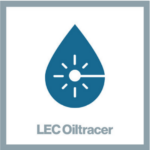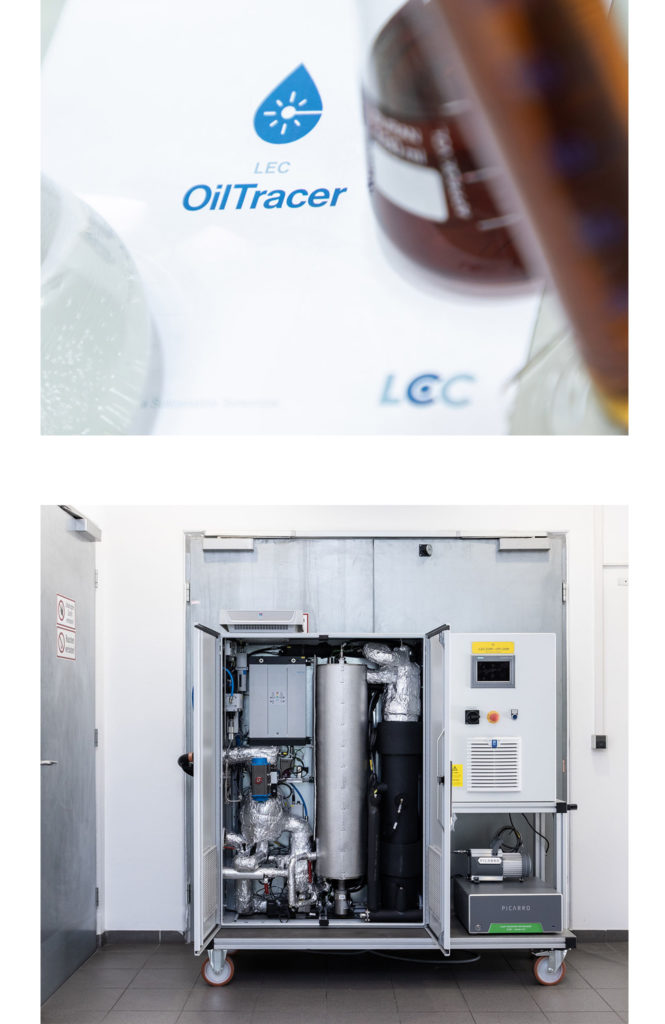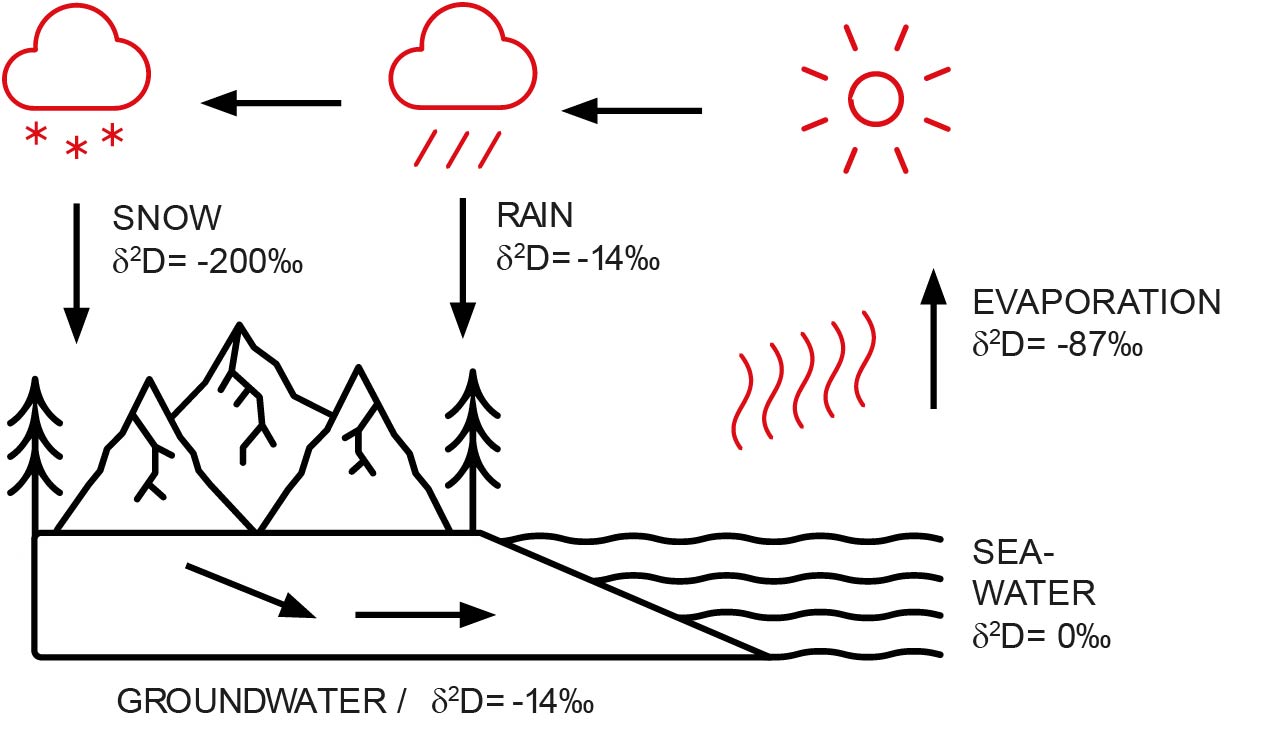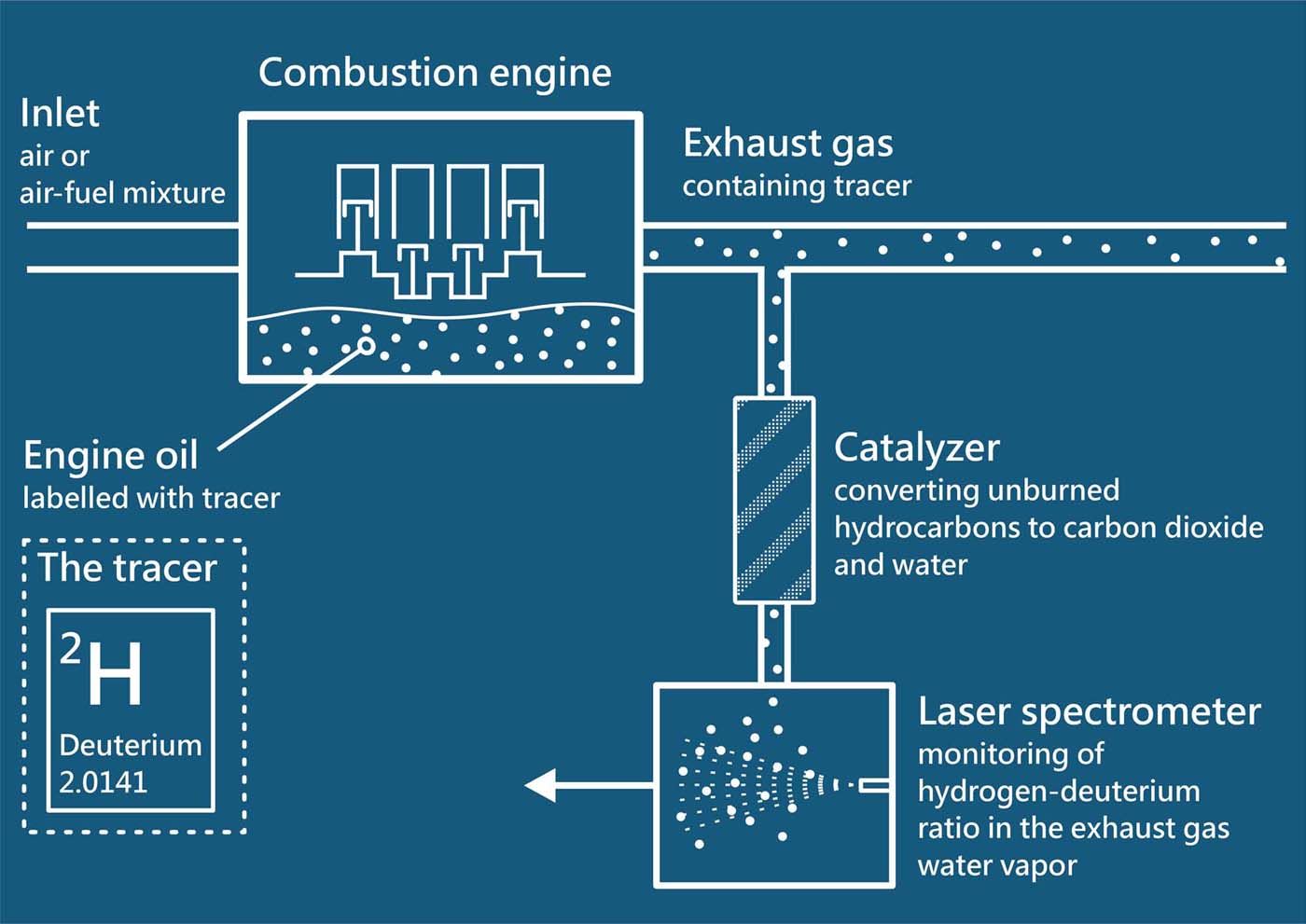The patented method was developed by the LEC team, together with Kristl, Seibt & Co GmbH and the Research Association for Combustion Engines and Thermodynamics. In this process, the engine oil is enriched with the stable isotope deuterium, which can then be detected in the water vapor of the exhaust gas during engine operation, thus providing information about oil consumption.
The components
The core components of the LEC OilTracer are a catalyst for the oxidation of hydrocarbons to CO2 and H2O, and an isotope analyzer. The requirements of the isotope analyzer are met with the help of an exhaust gas conditioning system developed by Kristl, Seibt and Co. The isotope analyzer is used for online measurement of the deuterium concentration in the exhaust gas water vapor.
The Tracer
The engine oil is marked with the tracer by hydrogen-deuterium exchange in the hydrocarbons of the oil. Within five days, an exchange of approximately 70 percent of the hydrogen atoms is achieved in an optimized two-stage process in the pressure reactor. Depending on the measurement accuracy required by the customer, up to 15 percent of the engine lubricating oil can be replaced by deuterated oil without significantly affecting the properties.
Application examples
This device for high-precision online measurement of lubricating oil consumption is ideally suited for original equipment manufacturers in the automotive and large engine sectors as well as suppliers of test bed systems. Offering lube oil consumption measurement via the deuterium method is also a service for existing LEC customers (including deuteration of custom engine oil).
LEC OilTracer on commercial vehicle engines
moreThis method was used on a commercial vehicle engine in the early stages of development. Initially, 3 kg of oil with very high purity (> 92%) was labelled with deuterium and added to the engine oil. Measurements were initially carried out offline – by collecting and subsequently analysing exhaust gas condensate in the laboratory. Subsequently, the online method described above was used and compared with reference methods. In terms of oil volume, these types of engines currently represent the limits of the applicability of this method. Research is currently being carried out into ways of labelling larger oil volumes.
LEC OilTracer on the car engine
moreLEC OilTracer is particularly suitable for car engines, as the amount of tracer required for engines of this size is in the range of < 500 mL. This means that the tracer can be produced and analysed in the LEC laboratory within a few weeks, taking customer requirements into account. The LEC OilTracer prototype was first used on a car engine in December 2020 and was characterised by high sensitivity, good reproducibility and easy handling.




